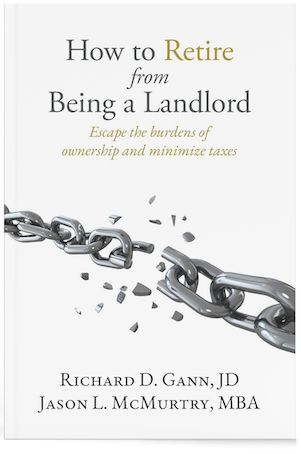
Why Average Mortgage Interest Rates Don’t Move in Lock Step with the Federal Reserve’s Target Rate
When the Federal Reserve (the Fed) adjusts its target interest rate—known as the federal funds rate—many people expect immediate and proportional changes in mortgage rates. However, the relationship between these two is far from one-to-one. While Fed policy is a powerful influence on overall interest rate trends, average mortgage interest rates— especially those on 30-year fixed mortgages—respond to a broader set of economic factors. Understanding the reasons behind this distinction helps clarify why mortgage rates often diverge from the Fed’s rate path.
The Fed’s Rate vs. Market-Based Mortgage Rates
The federal funds rate is a short-term, overnight lending rate that banks charge each other. It influences many short-term rates across the economy, such as credit card APRs and savings account yields. However, a 30-year mortgage is a long-term loan, and its interest rate is determined more by the bond market—specifically, by yields on long-dated U.S. Treasury securities like the 10-year Treasury note.
Mortgage lenders base their pricing in large part on the returns available from these long- term government bonds. When Treasury yields rise or fall, mortgage rates tend to follow— not necessarily because of what the Fed does directly, but because of what bond investors expect the Fed will do in the future.
Investor Expectations Drive Mortgage Rates
A key concept here is that financial markets are forward-looking. Investors make decisions based not just on today’s interest rate, but on where they believe rates, inflation, and the broader economy are headed. If the Fed signals a series of future rate cuts, for instance, long-term bond yields—and by extension, mortgage rates—may begin falling in advance of any actual Fed move.
Conversely, if markets expect inflation to remain sticky or the Fed to stay aggressive, long- term yields may rise even if the federal funds rate remains unchanged. This divergence often results in mortgage rates moving independently of the Fed’s actions in the short run.
Inflation Expectations Matter More Than the Fed Rate Itself
Mortgage rates are also heavily influenced by inflation expectations. Higher inflation erodes the purchasing power of fixed-income investments like bonds, making lenders demand higher yields to compensate. When inflation is rising or expected to remain high, mortgage rates typically go up—even if the Fed hasn’t yet raised its rate.
Likewise, if inflation appears under control or is trending lower, mortgage rates may fall regardless of the current fed funds rate. This is why in periods of high inflation uncertainty, mortgage rates can be particularly volatile and uncorrelated with short-term Fed policy.
Risk Premiums and Market Volatility
Mortgage rates also include a risk premium—an extra yield to compensate lenders for credit risk, prepayment risk, and interest rate volatility. If credit markets tighten or there’s uncertainty about the economic outlook, lenders may raise mortgage rates even if Treasury yields are stable. This further decouples mortgage rate movements from Fed rate changes.
In early 2023, for example, the Fed began signaling a pause or slowdown in rate hikes. Yet average mortgage rates remained stubbornly high. Why? Because lenders priced in ongoing inflation risk, concerns about bank stability, and uncertainty about the economy—all of which widened spreads between mortgage rates and Treasuries.
The Role of the Mortgage-Backed Securities Market
Most mortgage loans in the U.S. are bundled into mortgage-backed securities (MBS) and sold to investors. The demand for MBS, their perceived credit quality, and expectations for future prepayment afect how these securities are priced—and therefore, how lenders price mortgages.
If investor demand for MBS drops, yields on these securities must rise to attract buyers, leading to higher mortgage rates. Fed policy afects MBS indirectly, but other factors like global capital flows, changes in banking regulation, and geopolitical uncertainty can also drive MBS prices and thus mortgage rates.
Fed Policy Still Matters—But Indirectly
Although mortgage rates do not move in lock step with the federal funds rate, Fed policy remains a crucial influence. When the Fed raises rates to fight inflation, it signals tighter financial conditions ahead, which typically pushes Treasury yields and mortgage rates higher. Conversely, dovish Fed policy tends to ease financial conditions and lower rates over time.
However, the timing and magnitude of mortgage rate changes often difer from those of the federal funds rate. The link is real, but indirect—and it passes through several layers of expectations, market signals, and economic indicators.
Conclusion
The average 30-year fixed mortgage rate does not track the Fed’s target rate point for point because the two serve fundamentally diferent functions in the economy. The federal funds rate is a short-term policy tool aimed at influencing liquidity and inflation. Mortgage rates, by contrast, are long-term instruments shaped by bond markets, investor expectations, inflation outlooks, and global capital flows.
While changes in Fed policy can eventually influence mortgage rates, the path is neither immediate nor guaranteed. As a result, borrowers may see mortgage rates rise or fall even when the Fed is standing still—or moving in the opposite direction.
This information is for educational purposes only and does not constitute direct investment advice or a direct ofer to buy or sell an investment, and is not to be interpreted as tax or legal advice.
Securities ofered through Concorde Investment Services, LLC (CIS), member FINRA/SIPC. Advisory services ofered through Concorde Asset Management, LLC (CAM), an SEC registered investment adviser. Insurance products ofered through Concorde Insurance Agency, Inc. (CIA). 1031 Capital Solutions is independent of CIS, CAM and CIA.
continue reading
Related Posts
1031 Industry Veterans Launch Proprietary Software for Rental Housing Providers […]
When it comes to building and preserving generational wealth through […]
How to Report a 1031 Tax-Deferred Real Estate Exchange to […]











